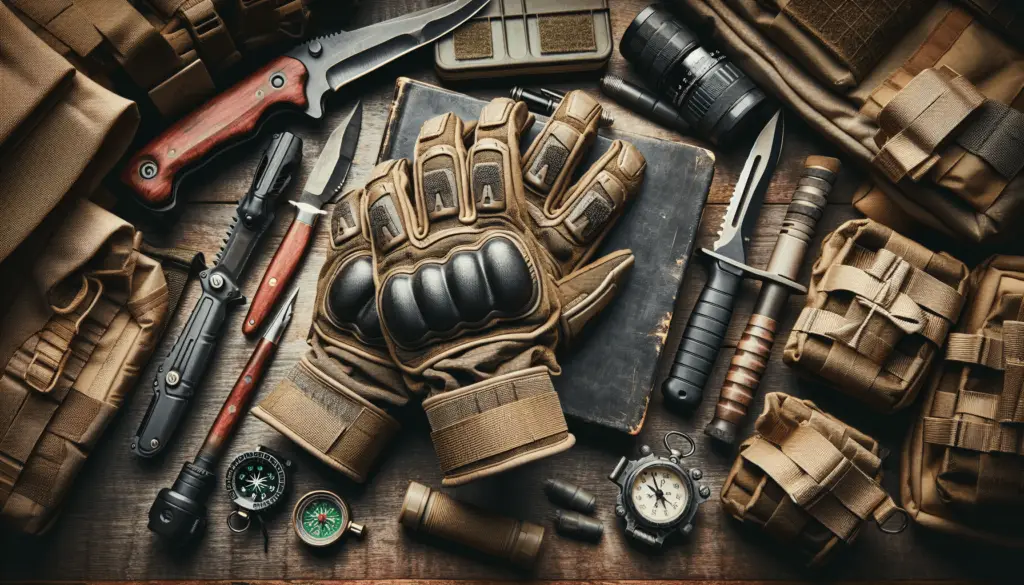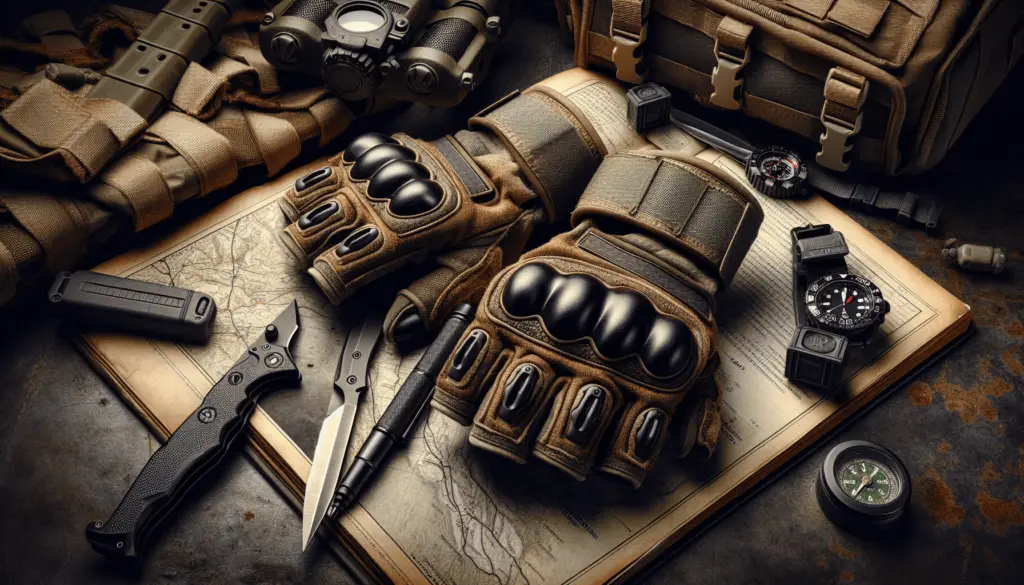Are You Prepared for Self-Defense?
Being able to defend yourself in a physical altercation is a crucial skill to have, especially in uncertain times. As a prepper, it’s essential to be prepared for any situation that may arise. Hand-to-hand combat techniques can be a valuable tool in your self-defense arsenal. In this guide, we will explore various techniques and strategies that you can use to protect yourself in a physical confrontation. It’s important to remember that these techniques should only be used in self-defense situations and as a last resort.

Understanding the Basics of Hand-to-Hand Combat
Before diving into specific techniques, it’s essential to understand the basics of hand-to-hand combat. Knowing how to move your body, maintain balance, and generate power in your strikes is key to effectively defending yourself. Practice proper footwork, keep your guard up, and focus on your breathing to maintain control in a fight. Remember that staying calm and focused can give you a significant advantage in any physical altercation.
Proper Stance and Guard
In any hand-to-hand combat situation, your stance is crucial. A proper stance allows you to move quickly and maintain your balance while striking or defending. Stand with your feet shoulder-width apart, your knees slightly bent, and your non-dominant foot slightly forward. Keep your hands up to protect your face and body, with your elbows close to your ribs. Practice moving in and out of your stance to become comfortable and fluid in your movements.
Generating Power in Your Strikes
Power is essential in hand-to-hand combat, as it can determine the effectiveness of your strikes. To generate power in your punches, use your entire body, not just your arms. Rotate your hips and shoulders as you punch, transferring your weight from your back foot to your front foot. Focus on the speed and precision of your strikes, aiming for vulnerable areas on your opponent’s body. Practice hitting pads or a heavy bag to improve your technique and power.
Breathing Techniques
Proper breathing is often overlooked in hand-to-hand combat but can make a significant difference in your performance. Focus on breathing deeply and exhaling forcefully with each strike or defensive movement. Controlled breathing can help you stay calm and focused during a fight, preventing fatigue and allowing you to maintain your energy levels. Practice breathing exercises during your training sessions to improve your endurance and overall performance.
Essential Hand-to-Hand Combat Techniques
Now that you have a solid foundation in hand-to-hand combat basics, let’s explore some essential techniques that you can use in self-defense situations. These techniques are designed to help you defend yourself effectively and escape from dangerous situations. Remember to practice these techniques regularly to ensure that you can execute them confidently and efficiently when needed.
Jab
The jab is one of the most basic and versatile punches in hand-to-hand combat. It’s a quick and straight punch thrown with your lead hand to create distance or set up other strikes. To throw a jab, extend your arm straight out from your guard position, rotating your fist palm down at the point of contact. Keep your other hand up to protect your face and body. The jab can be used to keep your opponent at bay, gauge distance, or set up more powerful strikes.
Cross
The cross is a powerful rear-hand punch that can deliver a significant amount of force to your opponent. To throw a cross, rotate your hips and shoulders as you extend your rear arm straight out, turning your fist palm down at the point of impact. Transfer your weight from your back foot to your front foot to generate power in the punch. Keep your lead hand up to protect your face and body. The cross is an effective strike for close-range combat and can be used to follow up after a jab.
Hook
The hook is a rounded punch thrown with your lead or rear hand in a horizontal arc to strike your opponent from the side. To throw a hook, pivot on your lead foot while rotating your hips and shoulders, then bend your elbow and drive your fist towards your target. Keep your other hand up to protect your face and body. The hook is an effective strike for targeting your opponent’s jaw, temple, or ribs and can be used to disrupt their guard or set up other strikes.
Uppercut
The uppercut is a vertical punch thrown upward with your lead or rear hand to target your opponent’s chin or body. To throw an uppercut, bend your knees and shift your weight to your lead foot, then drive your fist upward in a tight arc, rotating your body to generate power. Keep your guard up to protect your face and body. The uppercut is a close-range strike that can be used to counter an opponent’s guard or follow up after a hook.
Front Kick
The front kick is a quick and versatile strike using your lead leg to push your opponent away or create distance. To throw a front kick, lift your lead knee towards your chest, then extend your leg outward, striking with the ball of your foot or toes. Keep your hands up to protect your face and body. The front kick can be used to target your opponent’s torso or legs and is an effective strike for keeping them at a distance or disrupting their balance.
Knee Strike
The knee strike is a powerful close-range attack using your knee to strike your opponent’s body, head, or legs. To throw a knee strike, bring your knee upward towards your chest, then drive it forward or upward to make contact with your opponent. Use your hands to control your opponent’s head or body to set up the knee strike. The knee strike can be a devastating blow in close-quarters combat and is an effective technique for immobilizing or incapacitating your opponent.

Defending Against Attacks
In addition to knowing how to strike effectively, it’s crucial to understand how to defend against your opponent’s attacks in hand-to-hand combat. Developing strong defensive skills can help you avoid injury and create opportunities to counter-attack. Practice your defensive techniques regularly to build muscle memory and increase your reaction time in a fight. Remember that staying calm and focused under pressure is key to successfully defending yourself in any physical altercation.
Parrying
Parrying is a defensive technique used to redirect your opponent’s strikes to create openings for counter-attacks. To parry a punch, use your lead hand to deflect your opponent’s strike away from your body, then follow up with a quick counter-attack. Keep your other hand up to protect your face and body. Parrying can be an effective way to disrupt your opponent’s rhythm and create opportunities to strike back. Practice parrying drills with a partner to improve your timing and reflexes.
Blocking
Blocking is a fundamental defensive technique used to absorb or deflect your opponent’s strikes to protect yourself from harm. To block a punch, use your forearms or hands to intercept the strike, absorbing the impact with your guard. Keep your elbows close to your ribs and your hands up to protect your face and body. Blocking can be an effective way to minimize the damage from your opponent’s attacks and create opportunities to counter-attack. Practice blocking drills to develop your defensive skills and build resilience against strikes.
Evading
Evading is a defensive technique used to avoid your opponent’s strikes by moving your body out of the line of fire. To evade a punch, use footwork to step back, angle to the side, or duck under the attack. Keep your hands up to protect your face and body while moving. Evading can be an effective way to create distance, frustrate your opponent’s attacks, and set up counter-attacks. Practice evading drills to improve your footwork, agility, and defensive capabilities in a fight.
Clinching
Clinching is a close-range defensive technique used to control your opponent’s movement and limit their ability to strike. To clinch, wrap your arms around your opponent’s body or head, locking them in a bear hug position. Use your weight and leverage to control your opponent’s balance and prevent them from striking effectively. Clinching can be a valuable tool for neutralizing a stronger or more aggressive opponent and creating opportunities to escape or counter-attack. Practice clinching drills with a partner to develop your control and positioning in close-quarters combat.
Developing a Training Routine
To effectively learn and master hand-to-hand combat techniques, it’s essential to develop a consistent training routine. Regular practice and repetition are key to building muscle memory, improving your reflexes, and increasing your overall fighting skills. Here are some tips for creating a training routine that will help you become proficient in hand-to-hand combat.
Set Clear Goals
Before starting your training routine, it’s essential to set clear and achievable goals to guide your progress. Determine what specific techniques or skills you want to improve, such as striking power, defensive capability, or agility. Break down your goals into smaller milestones that you can work towards each training session. Having clear goals can help you stay motivated and focused on your training.
Practice Regularly
Consistency is key when it comes to learning hand-to-hand combat techniques. Aim to practice at least a few times a week to maintain your skills and make steady progress. Set aside dedicated time for training sessions, whether at home, in a gym, or with a partner. Focus on a variety of techniques, drills, and exercises to keep your training routine challenging and engaging. The more you practice, the more comfortable and confident you will become in applying your skills in a real-life situation.
Train with a Partner
Training with a partner can enhance your learning experience and simulate realistic combat scenarios. Find a training partner who is committed to improving their skills and can provide constructive feedback during practice sessions. Work together on drills, sparring, and technique development to challenge each other and improve your overall fighting abilities. Training with a partner can also help you build trust, communication, and teamwork skills that are vital in self-defense situations.
Seek Professional Instruction
If you are serious about mastering hand-to-hand combat techniques, consider seeking professional instruction from a qualified martial arts instructor or self-defense expert. Join a local martial arts school, self-defense class, or combat training program to learn from experienced instructors and train with other like-minded individuals. Professional instruction can provide you with valuable feedback, guidance, and correction on your technique, helping you progress more quickly and efficiently. Take advantage of workshops, seminars, and private lessons to enhance your skills and knowledge in hand-to-hand combat.
Cross-Train in Different Martial Arts
To expand your combat skills and develop a well-rounded fighting style, consider cross-training in different martial arts disciplines. Explore various styles such as boxing, Muay Thai, Brazilian Jiu-Jitsu, wrestling, or Krav Maga to learn different techniques, strategies, and principles of combat. Cross-training can expose you to a diverse range of movements, scenarios, and training methods that can improve your overall fighting ability and adaptability. Incorporate elements from different martial arts into your training routine to create a personalized fighting style that suits your strengths and preferences.
Conclusion
Hand-to-hand combat techniques are valuable skills that every prepper should have in their self-defense toolkit. By understanding the basics of hand-to-hand combat, practicing essential techniques, and developing a solid training routine, you can improve your fighting abilities and protect yourself in dangerous situations. Remember to train regularly, set clear goals, and seek professional instruction to enhance your skills and confidence in hand-to-hand combat. Stay focused, stay prepared, and stay safe.
